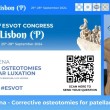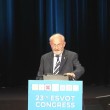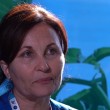R. Tass Dueland
DVM, MS, Diplomate ACVS, 1971
DVM, Cornell University 1956 MS
Mayo Graduate School of Medicine (Orthopedics) / University Minnesota 1970
Currently: Professor Emeritus, University Wisconsin-Madison, 2000
G.S-S. Tass, I believe that you have now retired from active clinical work. Before I ask you about our current interests, would you please give readers and account of your career up to that date?
T.D My research has covered projects regarding: ACL (patella tendon technique), Haemorrhagic shock (MS degree); Orthopaedics (biomechanics; trauma repair techniques & instrumentation (interlocking nail); hip dysplasia (juvenile pubic symphysiodesis (JPS); Hyperbaric investigations - dysbaric osteonecrosis, (‘the Bends’), U.S.Navy
G.S-S. During your career in veterinary orthopaedics, you must have seen many changes between the techniques used in your early days and what is used now. Most of the readers of Aldo Vezzoni’s site are considerably younger that you and I are, and will, I believe, be surprised at what you have to tell them in you interview.
TD Initially (1956), one drastic difference between veterinary school and practice, for me, was the ‘wet glove’ technique, which fortunately I convinced my boss to change. It consisted of washing your hands before surgery & then slipping on rubber gloves which had been soaking in disinfectant (alcohol?). It felt horrendous! Buying an autoclave led to the demise of that technique and also boiling ofthe instruments! A lot of fractures in the ‘old days’ were treated by closed reduction and external fixation devices (plaster casts, leg length malleable aluminum rod splints plus adhesive tape (Thomas splint), metasplints, or cage rest. Pinning, plates and screws, and external ‘K wire’ fixation was also used, but the sophistication of devices now (various plate and screw designs, interlocking nails/bolts, total joint replacements, etc.) are vastly superior. As well, devices and techniques have been modified through the years after thorough biomechanical analyses and improvement. I do regret somewhat the loss of current student exposure to casting techniques. I may be incorrect but I believe many graduating veterinarians may not have seen nor been exposed to learn the indications and proper techniques for the use of casts. One memory I currently find interesting is that I was introduced by our family physician, an orthopaedist, to the ACL ‘Jones technique’ reconstruction in the mid-1960s. I was in private practice on Staten Island, NY, when he called me one day to ask whether I had any dogs on which he could try this new technique; he had just read about in his orthopaedic journal. I had blood donor dogs and so we successfully did the surgery which I also thought was pretty slick. Anyway, he started performing the patella tendon technique on his human patients and I also did the same on my medium to large size dogs with ACL ruptures. What is interesting to me is that the patella tendon technique, along now with the ‘hamstring technique’, are the two most commonly performed ACL replacement procedures currently used in humans, especially in athletes, (Sports Illustrated 3/18/2013, p45). I deeply regret not adding follow-up to my initial report (Dueland RT, et al, A Recent Technique for Reconstruction of the Anterior Cruciate Ligament. Animal Hospital {now the AAHA journal} 21:1-5, 1966). I have used the patella tendon technique with minor modifications and good results for an additional 34 years until my retirement in 1999. The veterinary medical specialties, and profession in general, in my humble opinion, has markedly progressed and improved techniques and patient care results over the past decades. With the addition of biomechanical analyses of new hardware, diagnostic techniques (improved radiographic quality, ultrasound, CT, contrast studies, gait analysis, etc). Also the economics of the profession seems to be ascending (ovariohysterectomies were $15 - $25 in the busy practice I was in (1956), so I feel the futurewill be very good for the animals, owners and for veterinarians. Research funding is always tight yet the quality of research results appears consistently very good.
















